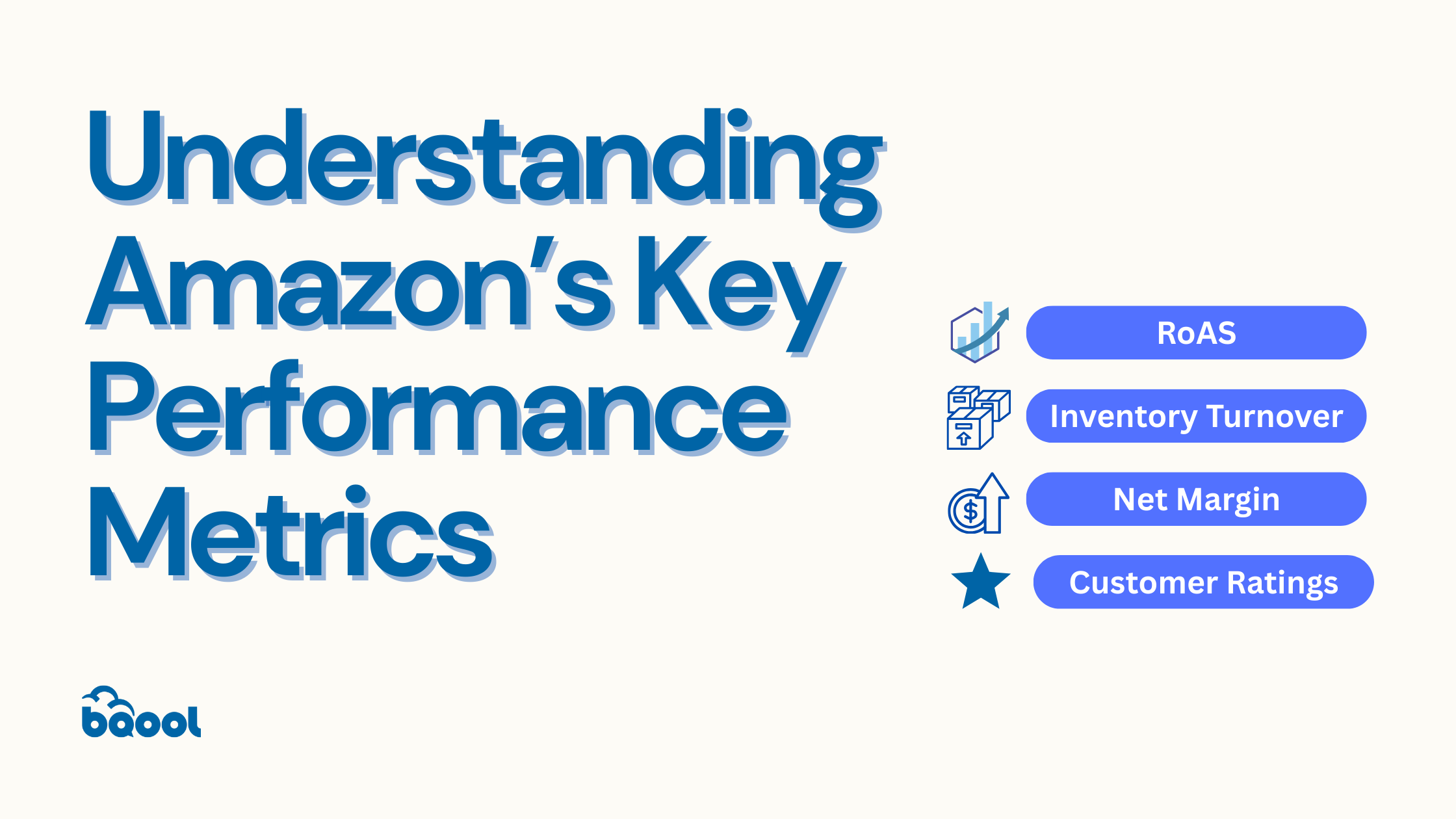How to Sell on Amazon in 2025: A Beginner’s Guide
Understanding Amazon’s Key Performance Metrics
Success on Amazon goes beyond listing products – it’s about tracking and optimizing critical performance metrics. The table below outlines essential metrics, why they matter, and how to use them to improve your sales, visibility, and profitability. Use this table below to stay competitive and grow your business strategically.
Essential Metrics to Monitor for Amazon Sellers
| Metric Category | Metric | Why It Matters | Actions to Take |
| Traffic and Engagement | Sessions | Shows the number of unique visitors to your product page, revealing listing visibility and customer interest. |
|
| Click-Through Rate (CTR)
|
Measures the effectiveness of listings or ads in capturing attention. |
|
|
| Conversion Rate (Unit Session %) | Indicates how well your listing converts visitors into buyers. Aim for 5-10%. |
|
|
| Buy Box Percentage | Tracks how often your offer appears as the default purchase option, crucial for sales. |
|
|
| Advertising Effectiveness | Return on Ad Spend (RoAS) | Measures profitability of ad spend, showing revenue earned per dollar spent. |
|
| Total Advertising Cost of Sales (TACoS) | Combines organic and ad-attributed sales for a holistic view of revenue. |
|
|
| Cost-per-Click (CPC) | Tracks the cost of each ad click, reflecting ad competitiveness. |
|
|
| Profitability and Margins | Gross Margin | Reveals profitability at the product level by excluding direct costs. |
|
| Net Profit Margin | Measures overall profitability after all expenses. |
|
|
| Cost of Goods Sold (CoGS) | Tracks direct costs of producing goods. |
|
|
| Inventory Management | Inventory Turnover Rate | Tracks how often inventory is sold and replaced, revealing sales velocity. |
|
| Excess Inventory % | Reflects overstocked items that tie up capital and increase costs. |
|
|
| Stockout Rate | Measures the percentage of time products are out of stock, impacting sales. |
|
|
| Customer Experience | Customer Ratings | Builds trust and impacts conversions through customer satisfaction. |
|
| Refund Rate | Indicates product or expectation issues. |
|
|
| Market Intelligence | Best Sellers Rank (BSR) | Shows product performance within its category based on sales velocity. |
|
Best Practice for Metric Analysis
1. Regular Monitoring
To establish an effective monitoring routine, dedicate consistent times each week to review your performance comprehensively. Rather than reacting to daily fluctuations, focus your attention on identifying meaningful trends that indicate true business patterns. Keep your analysis organized by maintaining detailed spreadsheets that track performance over time, allowing you to spot long-term patterns and seasonal changes.
2. Action-Oriented Analysis
When analyzing your data, transform these insights into concrete actions. Start by using your inventory data to optimize stock levels and prevent costly stockouts. Your performance metrics will highlight specific areas where listings need improvement, while campaign data should guide adjustments to your advertising strategy. Use your historical performance patterns to design promotional activities that align with your customers’ buying behavior.
3. Holistic Performance Review
Take a comprehensive approach to reviewing your overall performance by examining how different metrics interact and influence each other. By documenting your progress over time, you can identify meaningful long-term trends that shape your business trajectory. Compare performance across your entire product catalog to identify successful strategies that can be replicated. Set realistic performance goals by using category standards as benchmarks, allowing you to measure your success against industry averages while identifying areas for improvement.
💡Remember: Regular analysis and strategic adjustments based on these metrics will help ensure sustainable growth for your Amazon business.









Leave a Reply